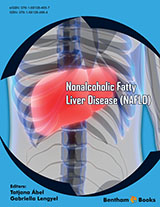Abstract
The non-alcoholic fatty liver disease (NAFLD) is a significantly increasing cause of chronic liver disease which is strongly associated with obesity and insulin resistance. Due to this association it is considered as the hepatic manifestation of the metabolic syndrome. According to the emerging clinical and epidemiological data patients with NAFLD have an increased morbidity and mortality of cardiovascular diseases (CVD), type 2 diabetes mellitus, chronic kidney disease as well as malignancies, beyond the liver-related mortality. A number of other less established comorbidities can also manifest together with NAFLD, like colorectal cancer, hypothyroidism, obstructive sleep apnea, polycystic ovarian syndrome and osteoporosis.
The majority of the patients however, maybe asymptomatic and the diagnosis is made only incidentally. Obesity, high body mass index (BMI), elevated transaminase levels and/or hyperechogenic ultrasound form the basis for the diagnosis. About 20% of the cases can progress to non-alcoholic steatohepatitis (NASH) and cirrhosis. Fibrosis, however, can be initiated either in simple steatosis or in NASH i.e. due to the most recent results, fibrosis progression is independent of the presence of NASH. In patients with simple steatosis and no inflammation, the fibrosis progression is very slow. The rapid progressors, however, can progress to cirrhosis within 2-6 years. In these patients, hypertension and diabetes are usually also present. The presence and severity of fibrosis on liver biopsy are the best indicators of long-term liver-related outcome in patients with NAFLD. The most important step during diagnosis is risk stratification.
Once a patient with NAFLD develops cirrhosis, he has the same natural history as with other etiologies. Patients with compensated cirrhosis have a 3-4% risk of mortality annually.
Keywords: Cardiovascular diseases, Chronic kidney disease, Colorectal cancer, Hypothyroidism, Non-alcoholic fatty liver disease, Non-alcoholic steatohepatitis, Obstructive sleep apnea, Osteoporosis.






















